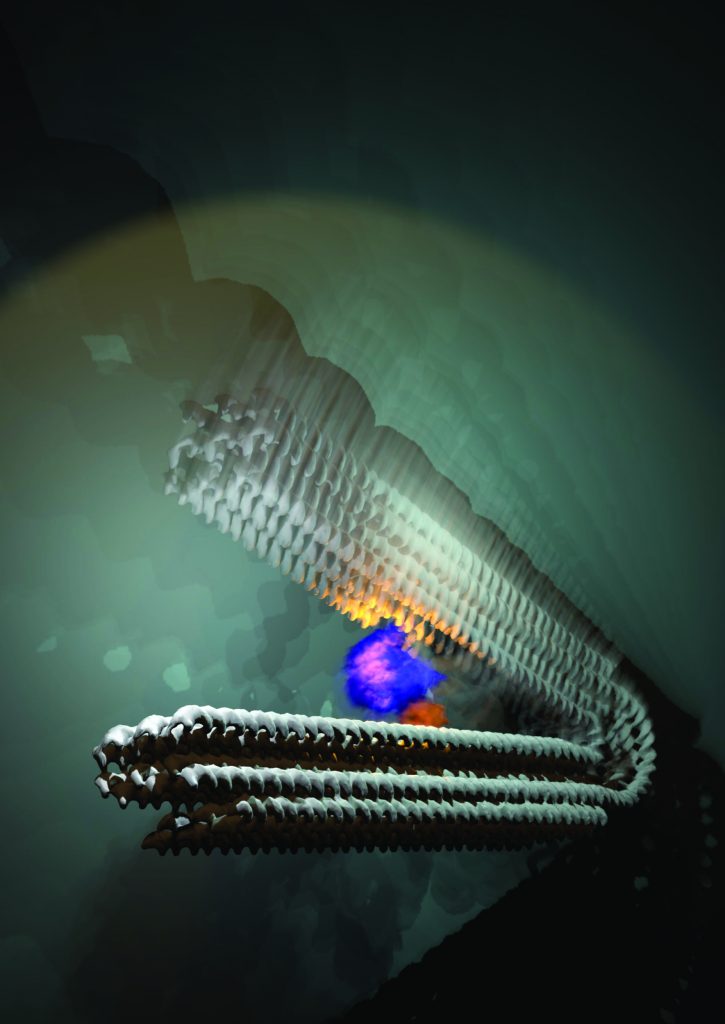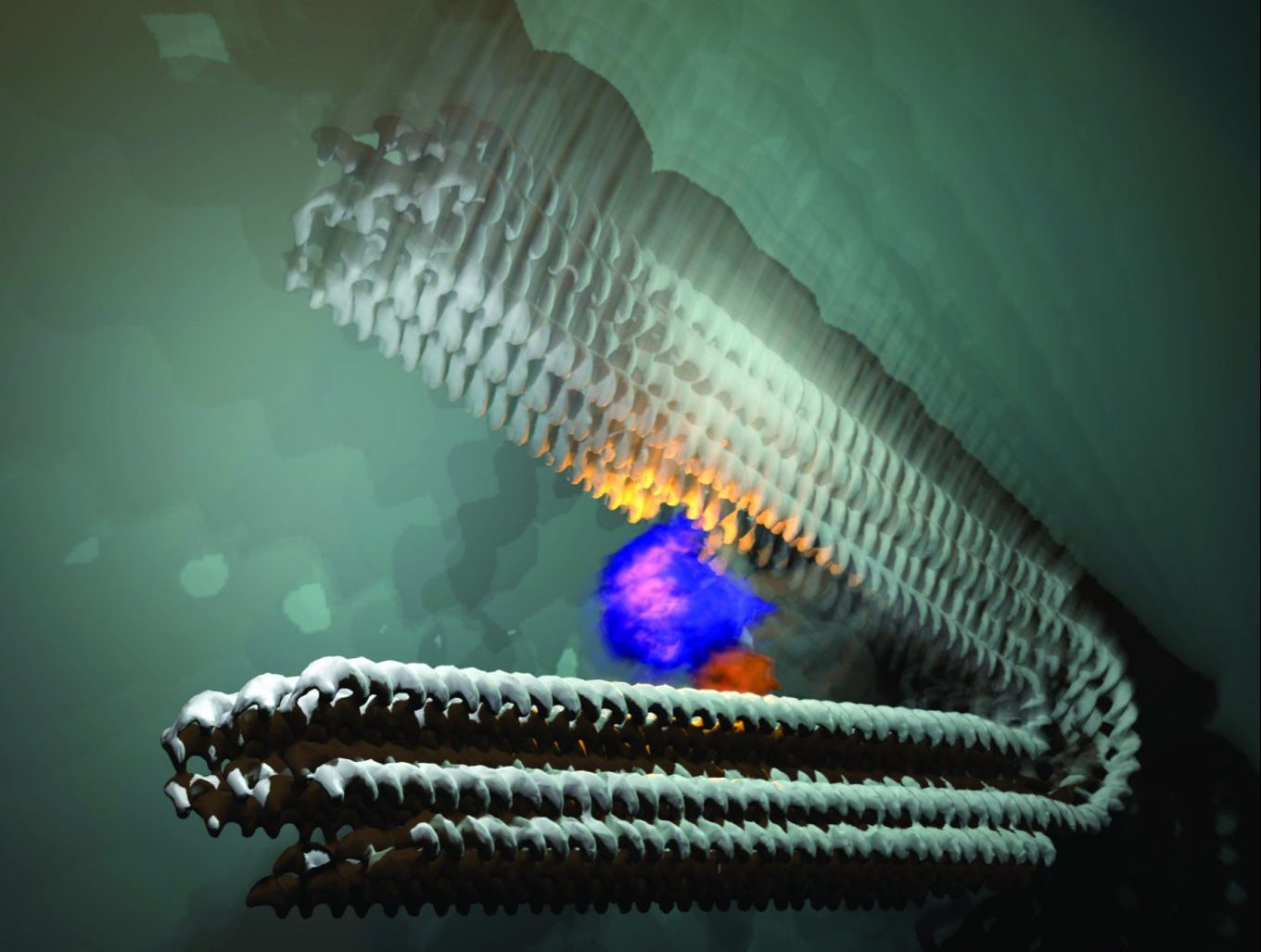For the Walter Lab, the proof is in the fluorescent pudding

How do you prove, in a laboratory setting studying objects in size just one-thousandth of the diameter of a hair, that something is doing what it is designed to do?
The Walter Lab at the University of Michigan is doing just that, through single-molecule fluorescence imaging and tracking, and recently for a tiny nano engine that might one day be a workhorse that routinely shuttles RNA molecules and other particles to cells.
Nils Walter, Co-Director of the Center for RNA Biomedicine at Michigan, recently partnered with an international team of scientists headed by the University of Bonn in Germany who developed a biohybrid rhythmic pulsing nanomotor constructed from DNA.
The DNA nanomachine, measuring 70 nm × 70 nm × 12 nm, is driven by the chemical energy of DNA-templated, nucleotide-fuel-consuming RNA transcription to generate a rhythmically pulsating motion of two rigid DNA-origami arms.
Think of a spring-action hand grip trainer, only rather than squeezing them together the handles are actually being pulled together. This is the mechanism that allows the machine to open and close like a little PAC-MAN.
Walter and his co-collaborators Sujay Ray and Robb Welty, a postdoctoral fellow who now serves as facilities manager at the University of Colorado School of Medicine in Aurora, were tasked with quantifying the movement of this minuscule engine, whose work is detailed in the article, “A rhythmically pulsing leaf-spring DNA-origami nanoengine that drives a passive follower,” published today in Nature Nanotechnology.
They developed a single-molecule Förster resonance energy transfer (smFRET) assay, placing fluorescent marker dyes at distinct points on each arm of the motor to monitor their distance over time.

Then, they introduced nucleotide fuel, and in real-time were able to measure actual changes in arm spacing, thus indicating movement. They proved definitively, via fluorescence imaging, that these nanomachines are actually pulsing the way they were designed to move.
The impact is far-reaching, in that these nanomachines could potentially be used one day to deliver an RNA therapeutic to its intended target. “We do not yet know what the best applications would be, but the prospect of using this motor to “walk” a drug to its intended target cell and releasing it there would be an exciting possibility,” Walter relates. “DNA nanotechnology like this is only now leaving the era of building components to deploying them; adding motors to the designs is definitely a step in that direction.”
The Walter Lab and others like it are the stalwart nuts and bolts of the RNA therapeutics engine poised for takeoff at Michigan. Walter emphasizes, “Work like this would take advantage of an in-house capability to synthesize RNA and DNA molecules, especially since then we can endow the DNA structure with potentially powerful substituents to bring about more functionality.”
Article cited: Mathias Centola, Erik Poppleton, Sujay Ray, Martin Centola, Robb Welty, Julián Valero, Nils G. Walter, Petr Šulc & Michael Famulok: A rhythmically pulsing leaf-spring DNA-origami nanoengine that drives a passive follower; Nature Nanotechnology; DOI: 10.1038/s41565-023-01516-x, https://www.nature.com/articles/s41565-023-01516-x


